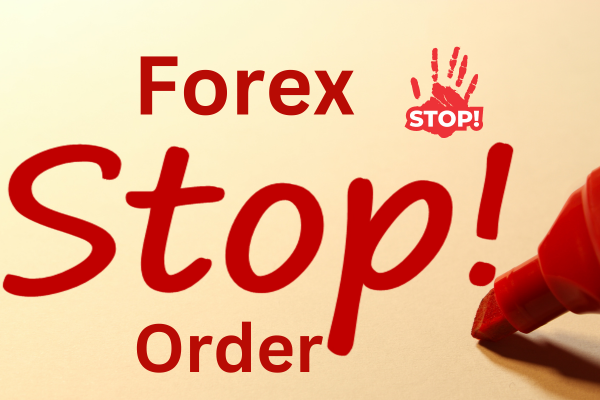
Forex Market Orders – how to execute them
Introduction:
In today’s fast-paced Forex trading environment, automated orders have become essential tools that allow traders to enter or exit trades at specific price levels. These types of orders play a critical role in managing trades effectively and efficiently. In this blog post, we will explore the various kinds of market orders available as well as how they can be utilized to enhance your overall trading strategy.
Market Orders

A market order is a straightforward type of order that executes instantly at the current market price. Traders often use this option when they want to enter or exit positions quickly without delay. Scalpers and day traders who aim for small profits from fluctuations in prices frequently rely on market orders due to their speedy execution times. This approach allows them to capitalize on opportunities as soon as possible before any changes occur. Overall, using market orders can provide an advantageous way to navigate through dynamic markets with ease.
Order Entry:

Market traders who want to avoid constant monitoring but still execute trades when specific price conditions are met often use entry orders. These types of orders allow them to specify a desired price level away from the current market rate for entering into transactions. They’re commonly used in breakout strategies where investors aim at buying or selling stocks once they surpass predetermined thresholds. By using these kinds of orders, traders can potentially maximize profits while minimizing risks associated with sudden fluctuations within markets.
Limit Orders

Limiting orders are instructions given to execute a trade at an advantageous price level that is higher than the current market rate. In forex trading there exist two types of limit orders – those used when opening trades and closing them respectively. By utilizing these tools effectively, traders can maximize their profits while minimizing losses in volatile markets.
Opening a Trade with Limit Orders

Traders often use limited entry orders to gain access to the market at a more favorable price than what is currently being offered. This approach allows them to capitalize on potential price reversals that may occur in future trading sessions.
For instance, if a currency pair is currently priced at 1.11511 and you believe it will rally from there soon enough – placing an order with a limit buy option set at 1.1120 could be just what you need! With this type of strategy employed by experienced traders like yourself- profits are sure to follow suit as well!
Traders can use limit orders to close trades when the market moves in their favor by a specific amount. This approach is commonly used as a means of taking profits from successful transactions. For example, if an investor bought EUR/USD at 1.1618 and wants to secure gains equivalent to one hundred pips they could place a sell limit order set at 1.1718.
By doing so traders are capable of locking down their desired profit margins while minimizing risk exposure during volatile markets. With this strategy in mind, it’s possible for even novice traders to become more confident about managing their portfolios effectively over time.
Stop Orders:

Similar to limit orders, stop orders also come in two variations: opening a trade with a stop order and closing one with another variation. Both types of stop orders serve as valuable tools for traders looking to manage their risk exposure effectively. By setting specific price points at which they want trades executed or closed out automatically these investors can minimize losses while maximizing profits.
Stop Orders – Opening a Trade
Stop orders are commonly used by traders to enter the market once they surpass a particular level. This approach is often utilized in breakout strategies such as currency pair trades where investors may place buy-stop orders at 1.11651 anticipating further upward momentum if prices remain above this threshold point.
By using stop orders, traders can capitalize on opportunities for profits while minimizing potential losses from adverse price movements. However, it’s important that these types of transactions be executed with caution and careful consideration since markets can change rapidly without warning or predictability.
How to Close a Trade with Stop Orders
A protective stop order is a valuable tool that helps traders manage risk by setting limits on potential losses. It works by closing out trades when the market moves against them beyond a predetermined threshold level. For example, if you sold EUR/USD at 1.1618 and placed an appropriate buy-stop order at 1.1668 then your maximum loss would be limited to just fifty pips.
This feature can prove invaluable for those who want greater control over their investments while minimizing exposure to unforeseen risks. By utilizing this type of protection mechanism effectively one can navigate through even volatile markets with confidence knowing they have safeguarded themselves from significant financial harm.
Placing Forex Orders – The Basics

Placing forex orders is straightforward and can be accomplished using the most user-friendly trading platforms.
The general steps to place a Forex order are as follows:
The process of initiating a trade on your trading platform involves several steps. Firstly, you need to open the deal ticket before proceeding with selecting whether buying or selling is appropriate for this particular transaction.
Next comes specifying an entry price level which determines when trades will commence while also setting stop-loss orders that manage potential losses and profit-taking levels accordingly through automated executions based on predefined thresholds.
This final step ensures maximum efficiency in managing risk exposure during market fluctuations without compromising profits earned from successful transactions made possible by these measures taken prior to executing any order placed online using digital platforms available today!
Conclusion:
Trading in the forex market requires more than just picking up trades at random. Understanding how different types of orders work is crucial if you want to succeed as a trader. Whether it’s immediate execution with market orders or strategic entry and exit points using limit and stop orders – knowing which one works best for your trading style can make all the difference between profits and losses.
To ensure success, take time out from live trading sessions to practice using various order types until they become second nature; this will help build confidence when executing real-time trades accurately. With these tools at hand – along with expertise gained through experience over time – navigating currency markets becomes less daunting and more manageable overall!